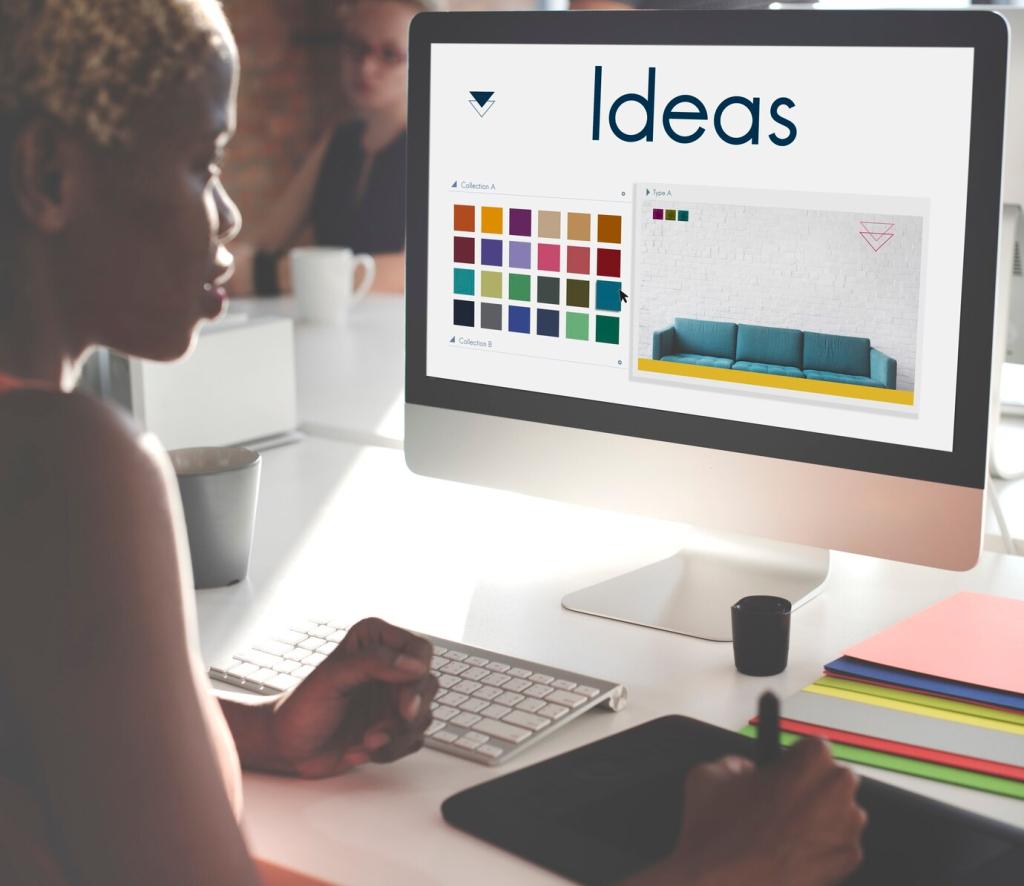Enhancing Interior Design Blogs with Effective SEO Techniques
Optimizing an interior design blog for search engines goes beyond simply publishing visually stunning content. Effective SEO techniques help bloggers reach a broader audience, convert casual browsers into loyal readers, and ultimately establish authority in the competitive digital landscape of interior design. This page explores proven SEO strategies tailored specifically for interior design bloggers, focusing on actionable methods to increase organic traffic, improve user experience, and achieve sustainable online growth.

Understanding SEO Foundations for Interior Design Blogs

Keyword Research Strategies
Effective keyword research is the cornerstone of successful SEO for interior design blogs. It involves identifying the words and phrases your target audience uses when searching for design inspiration, tips, or resources. By focusing on relevant keywords—such as “modern living room ideas” or “DIY home decor hacks”—you can craft content that answers specific questions and matches user intent. Incorporating both high-volume and long-tail keywords ensures you capture a diverse audience, from broad searchers to niche enthusiasts. Regularly updating your keyword database keeps your content aligned with emerging trends in the design industry, further boosting your visibility.

Importance of Search Intent
Understanding search intent allows interior design bloggers to create content that not only ranks high but also satisfies user needs. Search intent refers to the underlying motivation behind a user’s query. For example, someone searching for “best paint colors for small apartments” likely seeks actionable recommendations. Catering content to match informational, navigational, or transactional intent results in improved engagement, longer visit durations, and a higher likelihood of turning visitors into subscribers or clients. By analyzing search queries and aligning your topics accordingly, you enhance your blog’s relevance and authority in the design space.

On-Page Optimization Essentials
On-page optimization goes beyond inserting keywords into text; it encompasses the strategic use of meta titles, descriptions, header tags, image alt text, and internal linking. For interior design blogs, using descriptive alt text for photos of rooms or decor not only improves accessibility but can also drive traffic via Google Images. Crafting compelling meta descriptions entices users to click through from search results, while well-structured header tags make content scannable and user-friendly. Consistent on-page optimization efforts contribute to higher rankings and improved user experiences that keep readers coming back.
Creating Evergreen Design Topics
Focusing on evergreen content means publishing articles and guides that maintain relevance long-term. While trendy topics attract immediate traffic, evergreen posts—such as “How to Choose the Perfect Sofa” or “Timeless Color Palettes for Any Home”—continue to attract visitors months or even years after publication. These foundational posts establish your blog as an authoritative resource and provide backlink opportunities as other websites reference your expertise. Balancing timely trend pieces with evergreen guides ensures a steady stream of organic traffic and sustained reader interest.
Optimizing Visual Content for SEO
Interior design blogs thrive on imagery, yet many overlook the SEO potential hiding within their visuals. Properly optimized images—through descriptive filenames, compressed file sizes for fast loading, and well-written alt attributes—enhance both user experience and search ranking. Embedded photos can also appear in image search results, driving additional site visitors. Ensuring images are contextually relevant, high quality, and paired with keyword-rich captions helps solidify your blog’s place as a go-to resource for visual inspiration. Don’t neglect the power of rich, optimized multimedia as a driver of engagement and search performance.
Building Authority with Backlinks and Collaborations
Guest Posting in the Design Community
Guest posting involves sharing your insights or projects on reputable design websites or related blogs in exchange for a link back to your own site. This approach exposes your brand to new audiences, fosters valuable relationships with industry peers, and signals authority to search engines through relevant backlinks. Quality matters more than quantity in guest posting; targeting respected outlets within the interior design field ensures each link adds credibility. Crafting thoughtful, well-researched guest posts can establish you as a trusted voice and drive highly targeted traffic to your blog.
Collaborating with Influencers and Brands
Partnerships with influencers and brands can significantly boost an interior design blog’s SEO profile. By participating in joint projects—such as room makeovers, product reviews, or virtual tours—you gain exposure across multiple platforms, securing natural backlinks and social mentions. Brands often promote these collaborations on their channels, further expanding your reach. Transparent, mutually beneficial relationships generate authentic and buzzworthy content that audiences want to share, while search engines recognize the trust signals these collaborations produce.
Leveraging Resource Link Building
Resource link building focuses on creating comprehensive guides, glossaries, or tools that become reference material for other blogs, journalists, or educators. For interior design, this could be a detailed color theory chart, a comprehensive design style glossary, or a home renovation checklist. Promoting these resources to relevant websites increases the likelihood of earning backlinks as others cite your expertise. High-value resources not only drive organic traffic but also position your blog as an indispensable destination for design knowledge, boosting both domain authority and search visibility.
